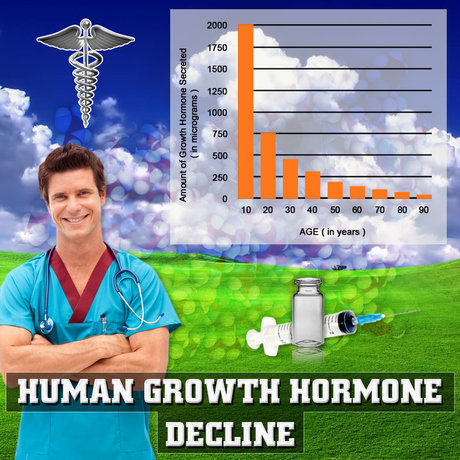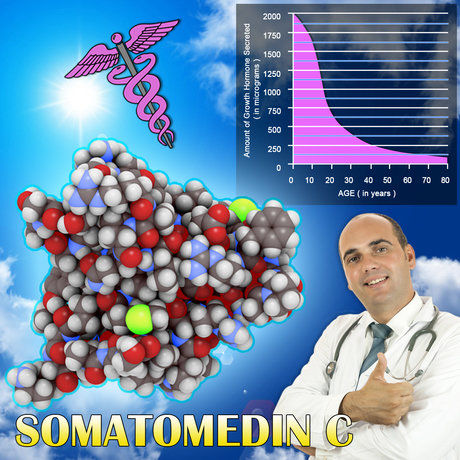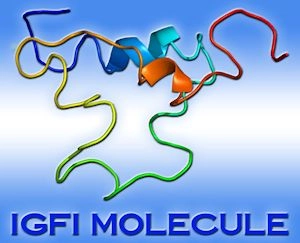Introduction
Breast cancer, although less common in men than in women, poses significant challenges to the affected population. In the United States, the incidence of male breast cancer is steadily increasing, necessitating a deeper understanding of treatment modalities and resistance mechanisms. Tamoxifen, a selective estrogen receptor modulator (SERM), is a cornerstone in the management of hormone receptor-positive breast cancer. However, resistance to tamoxifen remains a critical barrier to effective treatment. This article delves into the molecular biology of tamoxifen resistance in American males with breast cancer, offering novel insights that could pave the way for improved therapeutic strategies.
The Prevalence of Male Breast Cancer in the U.S.
Male breast cancer accounts for approximately 1% of all breast cancer cases in the United States. Despite its rarity, the impact on affected individuals is profound, with survival rates generally lower than those for women. The increasing incidence underscores the need for targeted research into treatment resistance, particularly for tamoxifen, which is commonly used in both male and female patients.
Mechanisms of Tamoxifen Resistance
Tamoxifen resistance can arise through various molecular pathways. One primary mechanism involves alterations in the estrogen receptor (ER) itself. Mutations or changes in ER expression can lead to a reduced affinity for tamoxifen, rendering it ineffective. Additionally, the upregulation of growth factor signaling pathways, such as the epidermal growth factor receptor (EGFR) and human epidermal growth factor receptor 2 (HER2), can bypass the inhibitory effects of tamoxifen, promoting cancer cell proliferation.
Molecular Insights into Resistance in American Males
Recent studies have begun to uncover unique molecular signatures of tamoxifen resistance in American males. For instance, a higher prevalence of ER mutations has been observed in male patients compared to their female counterparts. These mutations often occur in the ligand-binding domain of the ER, which directly impacts tamoxifen binding. Moreover, the expression of certain co-activators and co-repressors, which modulate ER activity, appears to differ between male and female patients, potentially contributing to differential resistance patterns.
Novel Insights from Genomic Studies
Genomic profiling has provided new insights into the molecular landscape of tamoxifen resistance. In American males, specific gene expression patterns have been identified that correlate with resistance. For example, the overexpression of genes involved in DNA repair and cell cycle regulation, such as BRCA1 and cyclin D1, has been linked to tamoxifen resistance. These findings suggest that targeting these pathways could enhance the efficacy of tamoxifen in resistant cases.
Potential Therapeutic Strategies
Understanding the molecular basis of tamoxifen resistance opens the door to novel therapeutic strategies. One approach is the use of combination therapies that target multiple pathways simultaneously. For instance, combining tamoxifen with inhibitors of the EGFR or HER2 pathways could overcome resistance by blocking alternative growth signals. Additionally, the development of next-generation SERMs that are less susceptible to resistance mechanisms could provide more effective treatment options for American males with breast cancer.
The Role of Lifestyle and Environmental Factors
Lifestyle and environmental factors may also play a role in tamoxifen resistance. In American males, factors such as obesity, alcohol consumption, and exposure to environmental estrogens could influence the molecular pathways involved in resistance. Addressing these factors through lifestyle modifications and public health initiatives could complement molecular-targeted therapies and improve treatment outcomes.
Conclusion
The molecular biology of tamoxifen resistance in American males with breast cancer is a complex and multifaceted field. By unraveling the specific mechanisms and molecular signatures of resistance, researchers can develop more effective and personalized treatment strategies. As the incidence of male breast cancer continues to rise, the insights gained from these studies will be crucial in improving the prognosis and quality of life for affected individuals. Continued research and collaboration between molecular biologists, clinicians, and public health experts will be essential in overcoming the challenges posed by tamoxifen resistance.
Contact Us For A Fast And Professional Response

- Unveiling The Understudied: An In-Depth Examination of Tamoxifen Side Effects [Last Updated On: March 2nd, 2025] [Originally Added On: March 2nd, 2025]
- Comprehensive Overview of Tamoxifen: Applications in Breast Cancer Treatment, Male Gynecomastia, and Beyond [Last Updated On: March 3rd, 2025] [Originally Added On: March 3rd, 2025]
- Exploring Long-Term Effects of Tamoxifen in Male Health Management [Last Updated On: March 4th, 2025] [Originally Added On: March 4th, 2025]
- Exploring Tamoxifen Therapy: Benefits and Risks for Men with Hormone-Sensitive Conditions [Last Updated On: March 5th, 2025] [Originally Added On: March 5th, 2025]
- Exploring Tamoxifen's Role in Treating Hormone-Sensitive Breast Cancer in Adolescent Males [Last Updated On: March 6th, 2025] [Originally Added On: March 6th, 2025]
- The Role of Tamoxifen in Male Breast Cancer Treatment: Efficacy, Side Effects, and Recommendations [Last Updated On: March 7th, 2025] [Originally Added On: March 7th, 2025]
- Understanding Tamoxifen Resistance in Breast Cancer: Mechanisms and Strategies for Overcoming Challenges [Last Updated On: March 8th, 2025] [Originally Added On: March 8th, 2025]
- Optimizing Male Breast Cancer Treatment: The Role of Tamoxifen in Pre and Post-Surgery [Last Updated On: March 9th, 2025] [Originally Added On: March 9th, 2025]
- Optimizing Tamoxifen Dosage for Effective Breast Cancer Management in American Males [Last Updated On: March 12th, 2025] [Originally Added On: March 12th, 2025]
- Unraveling the Biochemical Mechanisms of Tamoxifen in Treating Hormonal Cancers in American Males [Last Updated On: March 13th, 2025] [Originally Added On: March 13th, 2025]
- Exploring the Efficacy of Tamoxifen in the Battle Against Pediatric Cancer [Last Updated On: March 13th, 2025] [Originally Added On: March 13th, 2025]
- Tamoxifen: A Vital Treatment for Breast Cancer in American Men [Last Updated On: March 15th, 2025] [Originally Added On: March 15th, 2025]
- Unveiling the Risks: A Comprehensive Look at Prolonged Tamoxifen Use in American Males [Last Updated On: March 15th, 2025] [Originally Added On: March 15th, 2025]
- Tamoxifen's Role in Reducing Breast Cancer Recurrence in American Males [Last Updated On: March 15th, 2025] [Originally Added On: March 15th, 2025]
- Tamoxifen Therapy in American Males: Managing Drug Interactions and Optimizing Treatment [Last Updated On: March 16th, 2025] [Originally Added On: March 16th, 2025]
- Tamoxifen's Role in Breast Cancer Treatment and Prevention for American Males [Last Updated On: March 16th, 2025] [Originally Added On: March 16th, 2025]
- Tamoxifen's Impact on Cancer Cell Growth: Insights for American Males [Last Updated On: March 18th, 2025] [Originally Added On: March 18th, 2025]
- Tamoxifen's Role in Reducing Breast Cancer Mortality in American Males [Last Updated On: March 19th, 2025] [Originally Added On: March 19th, 2025]
- Tamoxifen: A Key Breast Cancer Treatment and Prevention Option for American Men [Last Updated On: March 19th, 2025] [Originally Added On: March 19th, 2025]
- Tamoxifen's Efficacy in Treating Male Breast Cancer: Benefits and Considerations [Last Updated On: March 19th, 2025] [Originally Added On: March 19th, 2025]
- Tamoxifen's Expanding Role in Men's Health: Research, Innovations, and Future Directions [Last Updated On: March 20th, 2025] [Originally Added On: March 20th, 2025]
- Tamoxifen's Role in Treating Male Breast Cancer: Efficacy, Side Effects, and Management [Last Updated On: March 21st, 2025] [Originally Added On: March 21st, 2025]
- Tamoxifen Therapy: Benefits and Risks for American Males with Breast Cancer [Last Updated On: March 21st, 2025] [Originally Added On: March 21st, 2025]
- Tamoxifen: From Breast Cancer to Male Health Applications in America [Last Updated On: March 21st, 2025] [Originally Added On: March 21st, 2025]
- Tamoxifen Benefits and Challenges for American Males with Recurrent Cancer [Last Updated On: March 22nd, 2025] [Originally Added On: March 22nd, 2025]
- Tamoxifen: Revolutionizing Breast Cancer Treatment and Prevention in American Men [Last Updated On: March 22nd, 2025] [Originally Added On: March 22nd, 2025]
- Tamoxifen's Impact on Male Health: Benefits, Risks, and Hormonal Effects [Last Updated On: March 22nd, 2025] [Originally Added On: March 22nd, 2025]
- Tamoxifen in Men: Managing Side Effects for Better Quality of Life [Last Updated On: March 22nd, 2025] [Originally Added On: March 22nd, 2025]
- Tamoxifen: A Comprehensive Guide for Men with Breast Cancer [Last Updated On: March 22nd, 2025] [Originally Added On: March 22nd, 2025]
- Overcoming Tamoxifen Resistance in Male Breast Cancer: Strategies and Emerging Therapies [Last Updated On: March 22nd, 2025] [Originally Added On: March 22nd, 2025]
- Tamoxifen: Enhancing Cure Rates in Male Breast Cancer Treatment [Last Updated On: March 23rd, 2025] [Originally Added On: March 23rd, 2025]
- Tamoxifen: A Promising Treatment for Hormone-Sensitive Leukemia in American Males [Last Updated On: March 23rd, 2025] [Originally Added On: March 23rd, 2025]
- Tamoxifen's Long-Term Effects on Women's Health: Insights for American Males [Last Updated On: March 24th, 2025] [Originally Added On: March 24th, 2025]
- Tamoxifen's Role in Male Health: From Gynecomastia to Infertility Treatment [Last Updated On: March 24th, 2025] [Originally Added On: March 24th, 2025]
- Tamoxifen's Potential in Treating Rare Cancers Among American Males: A New Hope [Last Updated On: March 24th, 2025] [Originally Added On: March 24th, 2025]
- Tamoxifen's Role in Treating Cancer Among American Males: Efficacy and Side Effects [Last Updated On: March 24th, 2025] [Originally Added On: March 24th, 2025]
- Tamoxifen's Role in Reducing Tumors: A Beacon of Hope for American Males [Last Updated On: March 24th, 2025] [Originally Added On: March 24th, 2025]
- Tamoxifen in American Males: Managing Drug Interactions for Optimal Therapy [Last Updated On: March 24th, 2025] [Originally Added On: March 24th, 2025]
- Tamoxifen's Impact on Male Bone Health: Strategies for Mitigation and Management [Last Updated On: March 24th, 2025] [Originally Added On: March 24th, 2025]
- Personalized Tamoxifen Therapy Enhances Breast Cancer Treatment for American Men [Last Updated On: March 25th, 2025] [Originally Added On: March 25th, 2025]
- Tamoxifen's Role in Treating Endocrine Cancers in American Males: A New Frontier [Last Updated On: March 25th, 2025] [Originally Added On: March 25th, 2025]
- Tamoxifen's Role in Male Breast Cancer: Molecular Insights and Clinical Impact [Last Updated On: March 25th, 2025] [Originally Added On: March 25th, 2025]
- Tamoxifen: A Promising Non-Surgical Treatment for Gynecomastia in American Males [Last Updated On: March 25th, 2025] [Originally Added On: March 25th, 2025]
- Tamoxifen: A Vital Ally for American Men in Cancer Treatment and Prevention [Last Updated On: March 25th, 2025] [Originally Added On: March 25th, 2025]
- Tamoxifen: Regulating Estrogen for Male Health Benefits and Risks [Last Updated On: March 25th, 2025] [Originally Added On: March 25th, 2025]
- Tamoxifen's Role in Managing Estrogen Fluctuations in American Males [Last Updated On: March 25th, 2025] [Originally Added On: March 25th, 2025]
- Tamoxifen: Vital for Men's Breast Cancer Treatment and Prevention [Last Updated On: March 25th, 2025] [Originally Added On: March 25th, 2025]
- Tamoxifen in Male Breast Cancer: Exploring Alternatives and Innovative Therapies [Last Updated On: March 26th, 2025] [Originally Added On: March 26th, 2025]
- Tamoxifen: A Key Strategy in Preventing High-Risk Breast Cancer in Men [Last Updated On: March 26th, 2025] [Originally Added On: March 26th, 2025]
- Tamoxifen's Role in Breast Cancer Therapy for American Males: Benefits and Advances [Last Updated On: March 26th, 2025] [Originally Added On: March 26th, 2025]
- Tamoxifen's Molecular Dynamics in Treating Male Breast Cancer: Mechanisms and Implications [Last Updated On: March 26th, 2025] [Originally Added On: March 26th, 2025]
- Tamoxifen in Early-Stage Male Breast Cancer: Treatment, Side Effects, and Management [Last Updated On: March 27th, 2025] [Originally Added On: March 27th, 2025]
- Tamoxifen: A Vital Treatment for Hormone-Positive Breast Cancer in American Males [Last Updated On: March 27th, 2025] [Originally Added On: March 27th, 2025]
- Tamoxifen's Role in Treating Male Breast Cancer: Mechanisms, Efficacy, and Considerations [Last Updated On: March 27th, 2025] [Originally Added On: March 27th, 2025]
- Tamoxifen's Dual Impact on Ovarian Function: Fertility and Menopausal Effects [Last Updated On: March 27th, 2025] [Originally Added On: March 27th, 2025]
- Tamoxifen: Gold Standard for Male Breast Cancer Treatment in American Men [Last Updated On: March 28th, 2025] [Originally Added On: March 28th, 2025]
- Tamoxifen's Crucial Role in Treating Male Breast Cancer: Benefits and Management [Last Updated On: March 28th, 2025] [Originally Added On: March 28th, 2025]
- Tamoxifen: Revolutionizing Hormone Therapy for American Men with Breast Cancer [Last Updated On: March 28th, 2025] [Originally Added On: March 28th, 2025]
- Tamoxifen in American Males: Balancing Benefits and Risks in Breast Cancer Treatment [Last Updated On: March 28th, 2025] [Originally Added On: March 28th, 2025]
- Tamoxifen Therapy and Depression in American Males: Mechanisms, Prevalence, and Management [Last Updated On: March 28th, 2025] [Originally Added On: March 28th, 2025]
- Genomic Predictors of Tamoxifen Response in American Men with Breast Cancer [Last Updated On: March 28th, 2025] [Originally Added On: March 28th, 2025]
- Tamoxifen: A Promising Therapy for Advanced Hormonal Cancers in American Males [Last Updated On: March 28th, 2025] [Originally Added On: March 28th, 2025]
- Tamoxifen's Endocrine Effects on American Men with Breast Cancer: Challenges and Management [Last Updated On: March 28th, 2025] [Originally Added On: March 28th, 2025]
- Tamoxifen in Male Breast Cancer: Benefits, Risks, and Future Directions [Last Updated On: March 29th, 2025] [Originally Added On: March 29th, 2025]
- Tamoxifen Use and Cataract Risk in American Males: A Comprehensive Analysis [Last Updated On: March 30th, 2025] [Originally Added On: March 30th, 2025]
- Tamoxifen: A New Hope for Male Fertility in American Men [Last Updated On: April 2nd, 2025] [Originally Added On: April 2nd, 2025]
- Tamoxifen Toxicity in American Males: Mechanisms, Effects, and Management Strategies [Last Updated On: April 2nd, 2025] [Originally Added On: April 2nd, 2025]
- Tamoxifen's Role in Men's Cancer Treatment: Mechanisms, Benefits, and Considerations [Last Updated On: April 3rd, 2025] [Originally Added On: April 3rd, 2025]
- Tamoxifen Therapy for American Males: Molecular Mechanisms and Personalized Treatment Strategies [Last Updated On: April 4th, 2025] [Originally Added On: April 4th, 2025]
- Enhancing Tamoxifen Efficacy in American Men: Adjunct Therapies and Personalized Approaches [Last Updated On: April 6th, 2025] [Originally Added On: April 6th, 2025]
- Tamoxifen's Role in Treating Male Breast Cancer in the U.S.: Therapy and Prevention [Last Updated On: April 6th, 2025] [Originally Added On: April 6th, 2025]
- Tamoxifen's Cardiovascular Impact on American Males: Benefits, Risks, and Management [Last Updated On: April 7th, 2025] [Originally Added On: April 7th, 2025]
- Tamoxifen's Role in Treating Male Breast Cancer: Mechanisms and Clinical Insights [Last Updated On: April 8th, 2025] [Originally Added On: April 8th, 2025]
- Tamoxifen's Role in Preventing Cancer and Health Issues in American Males [Last Updated On: April 8th, 2025] [Originally Added On: April 8th, 2025]
- Tamoxifen: A Vital Tool in Preventing and Treating Breast Cancer in American Men [Last Updated On: April 9th, 2025] [Originally Added On: April 9th, 2025]
- Tamoxifen in American Males: Breast Cancer Benefits vs. Endometrial Cancer Risks [Last Updated On: April 10th, 2025] [Originally Added On: April 10th, 2025]
- Tamoxifen's Impact on American Males with Breast Cancer: Treatment and Challenges [Last Updated On: April 10th, 2025] [Originally Added On: April 10th, 2025]
- Tamoxifen's Role in Chemoprevention for High-Risk American Males: Benefits and Risks [Last Updated On: April 10th, 2025] [Originally Added On: April 10th, 2025]
- Tamoxifen's Role in Treating Advanced Breast Cancer in American Males: Case Studies [Last Updated On: April 11th, 2025] [Originally Added On: April 11th, 2025]
- Tamoxifen's Expanding Role in Men's Health: Beyond Breast Cancer Treatment [Last Updated On: April 11th, 2025] [Originally Added On: April 11th, 2025]
















